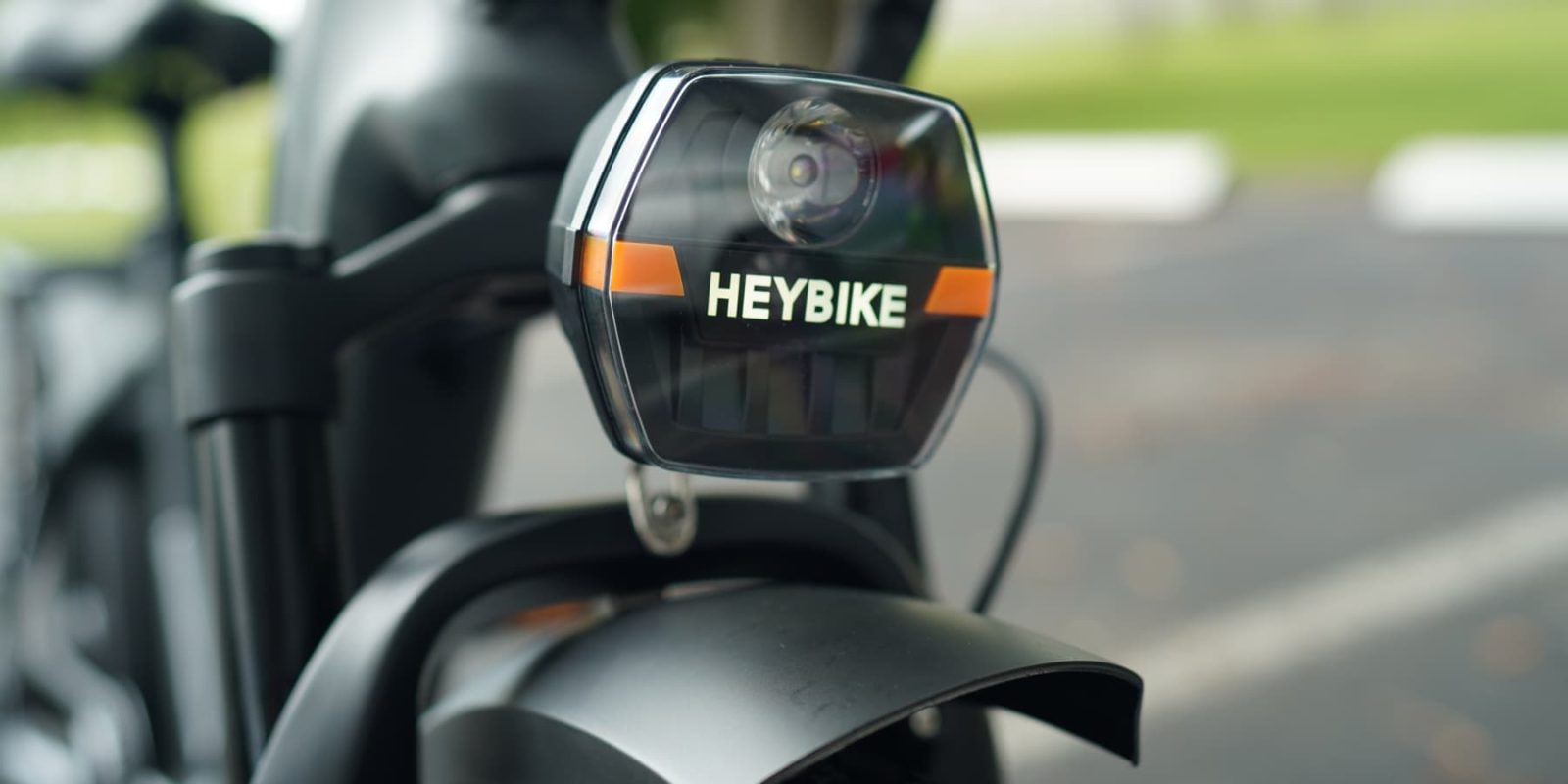
As more e-bike companies focus on the importance of safety certifications, riders are getting an increasing number of options for UL-listed e-bikes. Today we’re checking out the Heybike Ranger S, a folding fat-tire e-bike that has been tested in accordance with UL 2849 for complete e-bike drive systems as well as UL 2271 for the lithium-ion battery.
This isn’t our first brush with Heybike. I’ve tested several of the company’s e-bikes for complete reviews. While the early versions were a bit more basic, each successive e-bike launched by the company has upped the brand’s quality and design chops.
The new Heybike Ranger S continues that trend, offering nicer features like an integrated battery and of course the new UL-compliant design.
Check out my video review below to see my testing of the e-bike firsthand. Then continue on below to read my complete review.
Heybike Ranger S video review
Heybike Ranger S tech specs
- Motor: 750 W geared hub motor
- Top speed: 45 km/h (28 mph)
- Average Range: Up to 88 km (55 mi)
- Battery: 48V 14.4Ah (692 Wh)
- Charge time: 3-4 hours
- Max load: 181 kg (400 lb.)
- Weight: 32.6 kg (72 lb.)
- Suspension: Hydraulic suspension fork
- Brakes: Hydraulic disc brakes, 180 mm rotors
- Extras: LCD display with speedometer, battery gauge, PAS level indicator, odometer, tripmeter, front/rear LED lighting with turn signals in rear, accompanying smartphone app, included rear rack, included fenders, kickstand
- Price: $1,699 from HeyBike
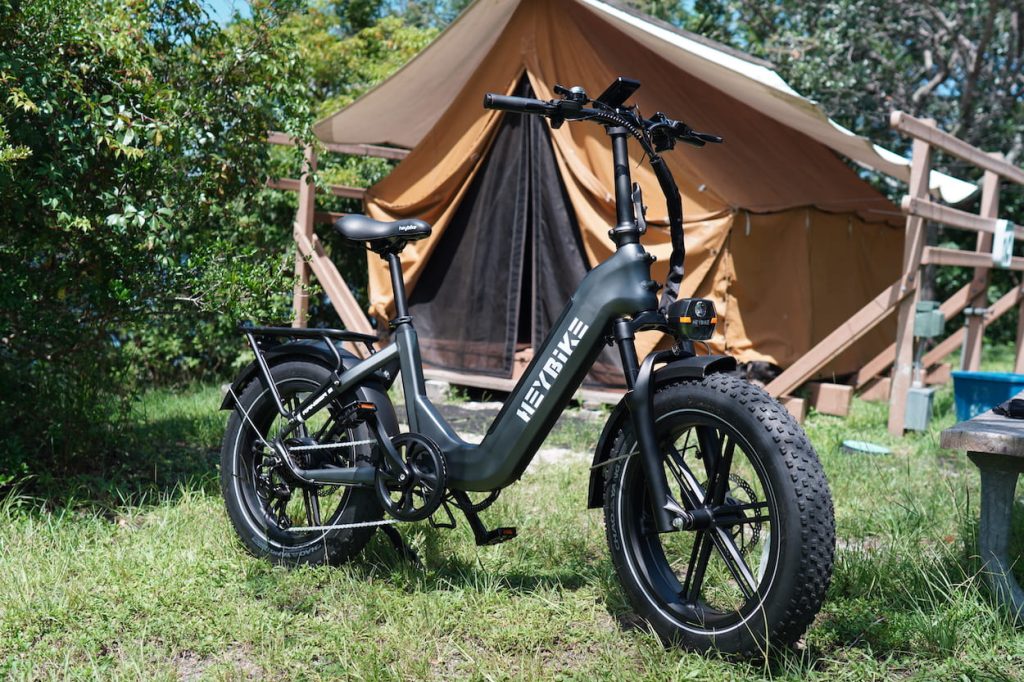
What are you getting here?
If you’ve seen one folding fat-tire electric bike, you’ve seen… most of them. There are some innovations out there, but this isn’t exactly one of them. Let’s face it – this is a tried and true design. And so you kind of know what you’re getting here.
All of the usual folding fat-tire e-bike features are here. We’ve got the usual 20×4″ fat tires, we’ve got a low step-through frame, and we’ve got dual folding mechanism that help the bike origami itself into a roughly cuboid shape that should fit in many car trunks and the back of pretty much any hatchback.
But that doesn’t mean Heybike didn’t do a good job here. The bike rides quite nicely and has plenty of power. I even enjoyed taking it onto actual gravel and dirt trails where the hydraulic suspension fork and fat tires served their purpose nicely. The 750W motor makes short work of slinging dirt around when you want to have extra fun, or you can ride it more relaxed as a fairly generic recreational e-bike.
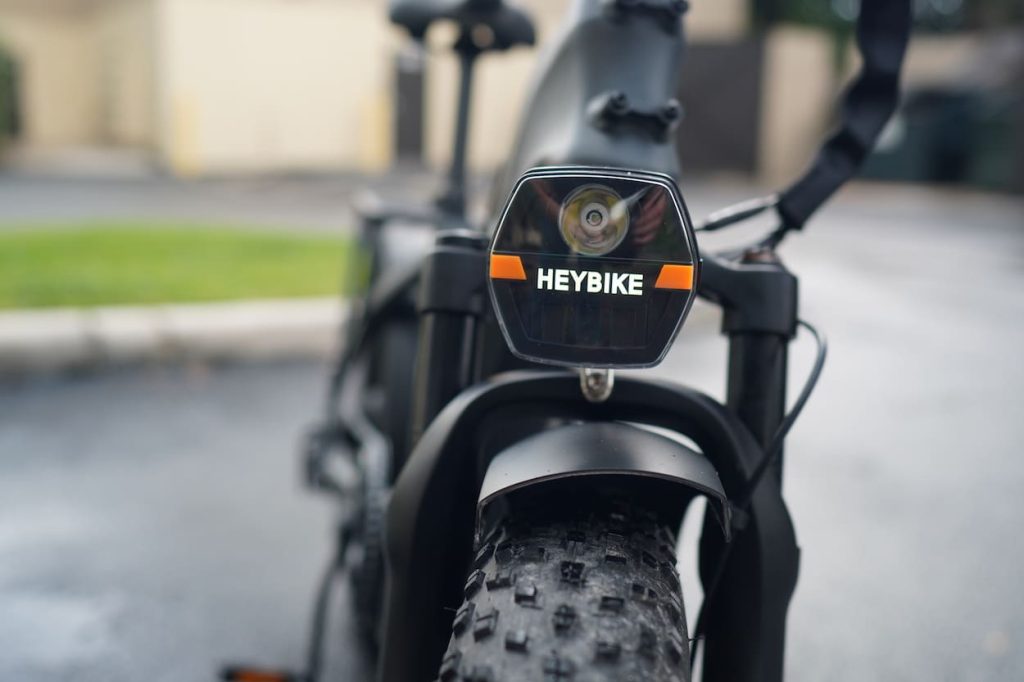
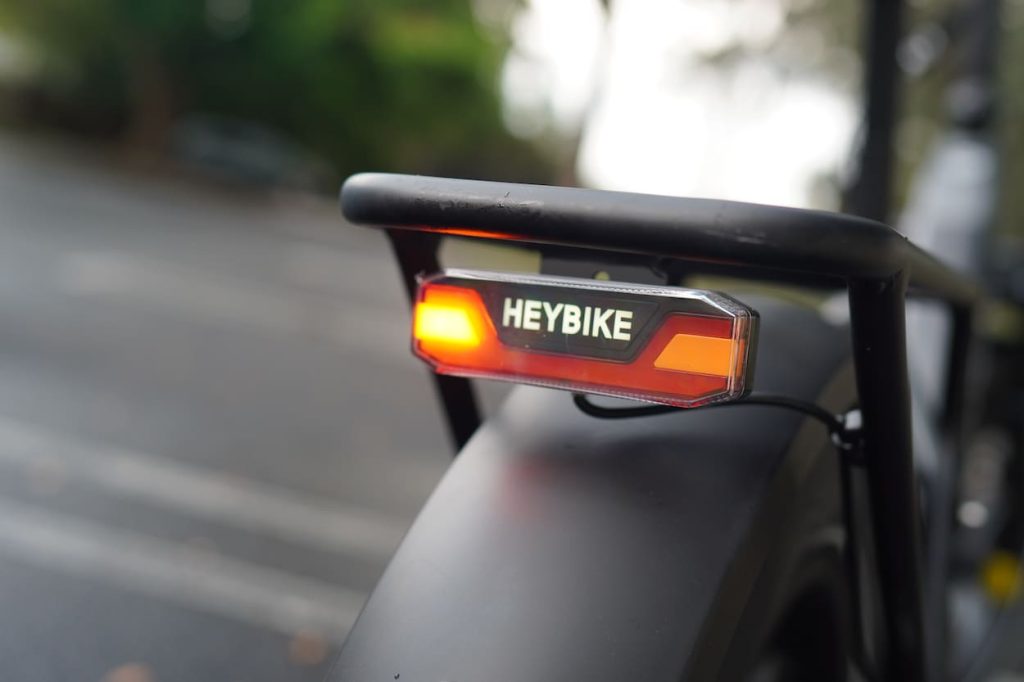
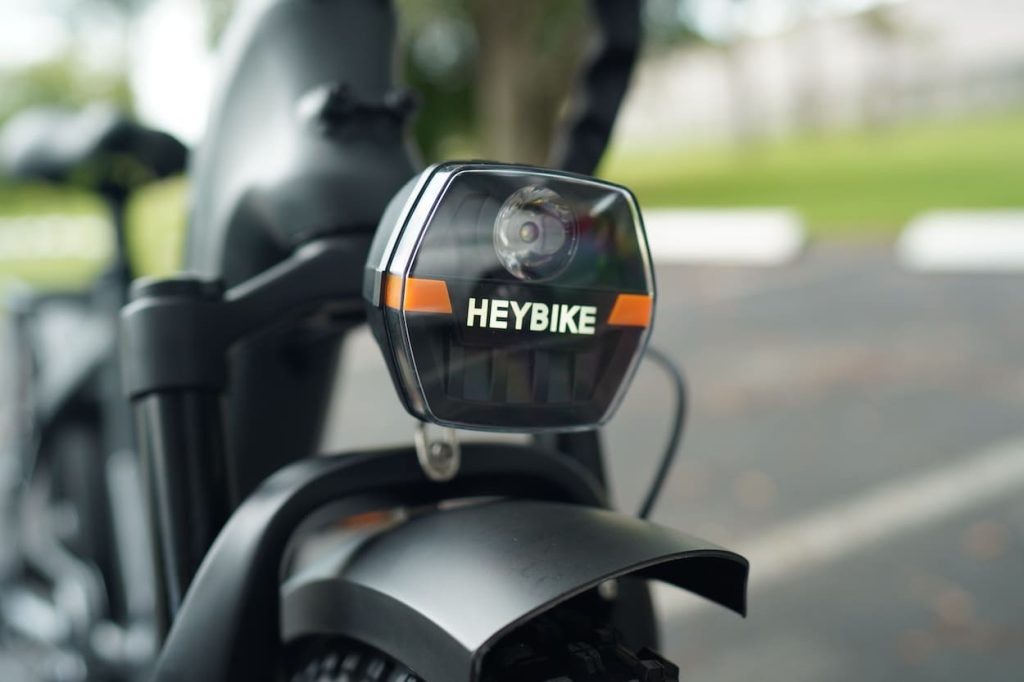



The ability to hit 28 mph (45 km/h) as a Class 3 e-bike can’t be discounted, either. The bike may be rather typical in many respects, but being able to travel nearly 50% faster than a Class 2 e-bike makes a major difference to riders who have long straightaways on their commutes or just like to feel the wind buffeting their face a bit harder. Class 2 e-bikes that top out at 20 mph (32 km/h) have their place, but I enjoy having the option of going a bit faster when I want to.
The frame-integrated yet removable battery is also a nice upgrade over the former Heybike Ranger, giving this model a nicer profile and slicker design. I was also surprised to see that the included charger is 4A, which is around twice as powerful as most e-bike chargers. That means it will charge the battery rather quickly, in usually four hours or less.
Heybike gives us the same turn signals we’ve come to know and love, though I still think they’re a bit of a gimmick. It doesn’t mean I’m not glad they’re there. But I still throw out a hand signal even when I use them since I’m not sure how many cars behind me actually see the little centerline light and know that I’m trying to say that I’m about to turn.
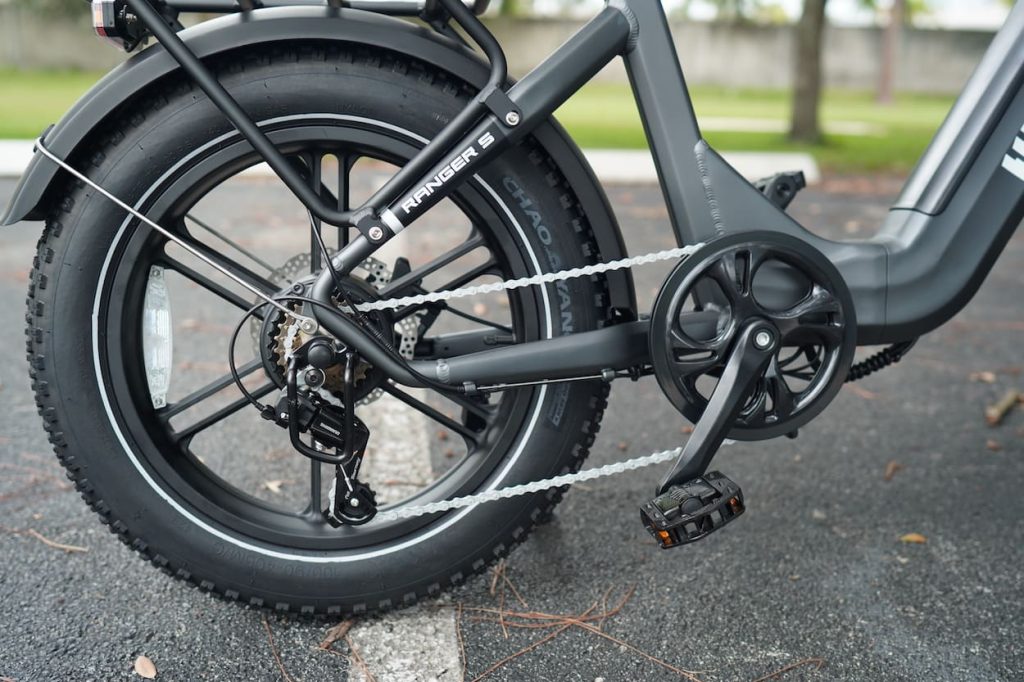
Extra safety from UL-listed components and systems
Even if the bike itself is fairly generic, the UL-listed battery and drivetrain isn’t. One day it will be much more common, but for now, you still have to hunt around for e-bikes that come with UL listing.
The mere presence of UL certification doesn’t mean the e-bike is free from worry (we hosted battery expert Luke Workman on a podcast recently and heard about the forensic autopsies he’s performed on fires from UL listed batteries), but it definitely tilts the odds in your favor.
It also means that you’re likely to experience fewer problems since companies can’t use cheap systems that cut corners.
Add in other safety features like hydraulic brakes and visible lighting, and you’ve got an e-bike that should help give you some real peace of mind.

Where does it fall short?
The cadence sensor-based pedal assist is just what you’d expect of a system like this: not as nice as a torque sensor. If you’ve used a torque sensor-based pedal assist e-bike before, then you’ll be spoiled. Cadence sensors work fine, but they just aren’t as elegant of a solution for those of us that do enjoy pedaling and want it to feel more natural and intuitive. The cadence sensor pedal assist is simply laggier and jumpier.
Next, the 72 lb. (33 kg) Heybike Ranger S is quite heavy. Sure, it’s a fat-tire folding e-bike, and both of those features add weight. But many people aren’t going to be comfortable lifting that much. If you’ve got plans to carry this e-bike in your trunk or in the back of your SUV, be advised that you may want to treat this as a team lift situation to avoid hurting your back.
As far as other complaints go though, I don’t really have any. The Heybike Ranger S doesn’t blow me away as anything incredibly special, but it does a good job at providing a reasonable, powerful folding fatty that is fairly fast and comfortable. At $1,499, it’s not overly expensive compared to the rest of the market. And the UL compliance is always going to be a nice feature to see.
So I’m not swooning here, but I also respect a solid entry in the market that doesn’t try to do too much. In that sense, I call the Heybike Ranger S a success.

FTC: We use income earning auto affiliate links. More.





Comments